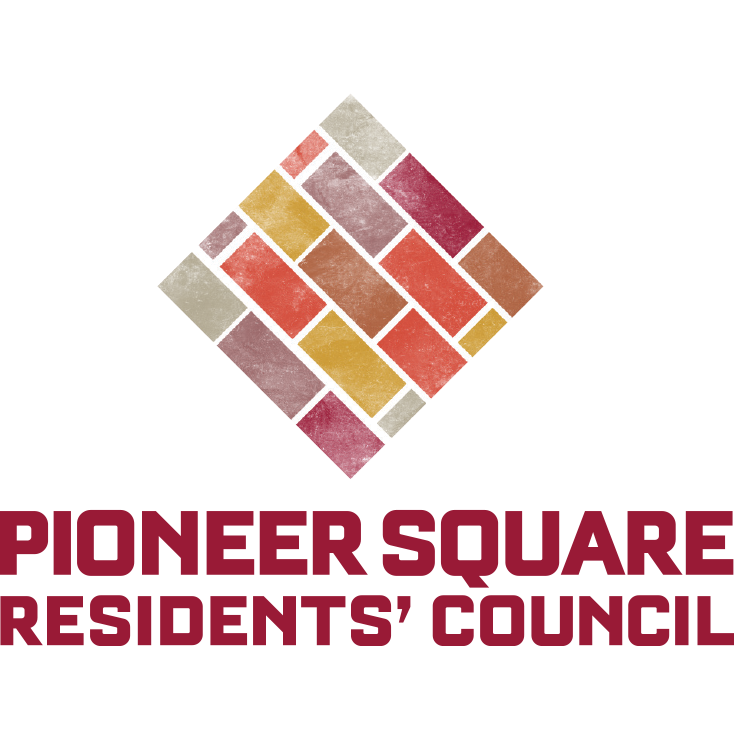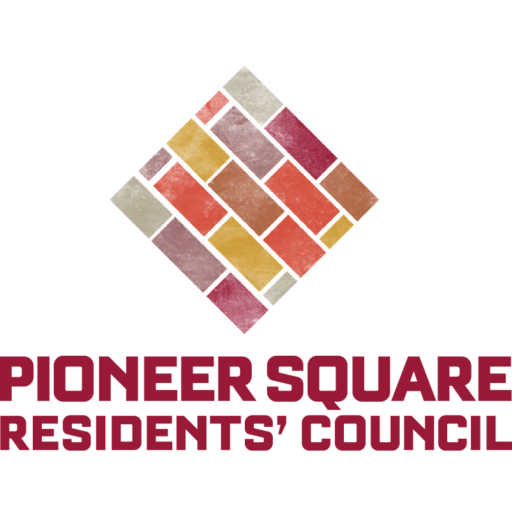14 Jan What will Seattle do without the 619?
Guest Post by Redd Walitzki
(Seattle Artist – candygears.com)
It’s hard to imagine that in two years time, the window I’m painting by won’t exist. The cars rushing past me on the viaduct, the bubbling stream of voices from the Underground tour, and the comforting pink glow of the neon “Saloon” sign will fade into a distant memory as I carve out a new life somewhere else.
Since 2008, my studio in 619 Western has been a constant font of inspiration for me. To work and sweat and dream within these walls is to be a part of something greater. Its a rare thing to find these day – an artist’s life is usually a solitary one, full of long days alone in the studio. So the community thriving in 619 is a rare gem, under the radar of the “official” seattle art scene, full of vibrance and chaos.
When I start painting for the day, “Weirdo” down the hall is already busy spray-painting. When I pack it up for the night, Mark Tracy has just begun his painting all-nighter. When I need advice or critique, I can just wander from door to door along my hallway. The walls shift and change as people hang things up for artwalk or to show off for visitors. Chairs are out from fleeting gatherings, the “free-pile” ebbs and flows with detritus and supplies, and the theater across the hall from me is full of shouting and laughter. The walls sing like radio-wires, and sometimes shake and rumble from the traffic on 99.
But all this is slated to end in March 2012. The city of Seattle has announced that part of the proposed Alaskan Way Tunnel Project entails tearing down this hundred year old building, which means the artists are out. The Western Building has always seemed unstable – like the next earthquake or renovation with rent increases will scatter the artists across Seattle. The 4 inch wide crack, literally splitting the building in half, is a constant reminder of the fragility of this space. And yet, it has endured against the odds. Crowds flock through on First Thursday, hungry and eager for the monthly artwalk. Many artists have their first show ever within these walls. Others show work here that is too controversial, strange, or out-of-fashion to find another venue. It’s bound to be different every time – and the mixing of over 150 different voices all in one place is what makes 619 so exciting.
When I got my studio here with my partner (Artist Carl Faulkner) in 2008, I was just out of art school and searching for my way and my voice. Su Job was our teacher at Cornish, and she got us the space we now rent. When she passed, she left Carl her artbooks. Hungry for knowledge and inspiration, I began reading her collection. I felt like I was following the trail of a ghost, reading her margin notes in the pages of “No Logo” and “The Anti-Aesthetic.” Eventually, I felt like I was on to an interesting topic that Su spent much of her life exploring and trying to communicate to her students. What is the role and value of “non-commercial” art to our culture?
It strikes me as interesting that the end of the 619 has brought this issue to the forefront of debate in Seattle. 619 has never been profitable, the artists that work and show here mostly do it out of love and unstoppable passion. We create because we have to, we don’t know why, but we know we have to. Some of us do rise to the top and become profitable, but a lot of the work here will never make it into a mainstream gallery, or be acknowledged and recognized. But a place like this, bursting with so much creativity adds something valuable to the cultural landscape of Seattle. It’s the busiest place on the Pioneer Square artwalk every month; it gives the public open access to a world they rarely ever have access to.
In the past few years I’ve watched Pioneer Square become a ghost town. Elliott Bay Books pulling out, followed by a whole flurry of small businesses on 1st Ave, left the Square feeling hollow. Howard House (one of Seattle’s most elite-artspaces) closing was a hard blow. These days, the old brick facades and empty storefronts make Pioneer Square feel more like a museum than a neighborhood. But at least there are still the crazy artists, walking back and forth in their paint-splattered clothes to get their coffee. We cover the neighborhood in murals and colors, and give Pioneer Square is role as Seattle’s “Art District.”
In many ways, 619 is the last gasp of the Seattle frontier, full of outlaw spirit. At 619, truly anything goes. It gives Seattle something outside the regular boundaries and structure of the commercial art world – it gives people something that can’t be planned, or designed or bought. It grew here organically, because the city needed it and wanted it. The question I’m asking myself is not “What will I do without the 619?” Because that’s not the thing that troubles me these days. Artists are resilient, it our job to imagine the impossible and make it reality, so I know we will be fine, wherever we end up. The question I’m asking myself, that I’m hoping the rest of the community will start asking too, is “What will Seattle do without the 619?”
Redd Walitzki
www.candygears.com




Sorry, the comment form is closed at this time.